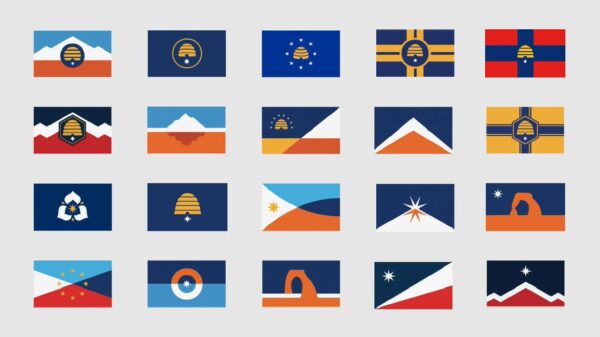Do They Really Represent Who We are?
As far back as history will show, flags have always held a significant role. They were created to give many cultures and many different people a sense of unity or purpose. Flags also held a personal representation of the people.
When it came to choosing a flag, America was no exception. In the year 1776 a flag was made by Elizabeth Ross to unite the first 13 colonies as one people and one independent country from Britain. And in later years the same stars and stripes would come to inspire our national anthem written by Francis Scott Key.
To this day that same flag (plus 37 more stars) represents all of America. So why do individual states wave another flag, why are they completely distinct from each other, and what is this in the news about changing Utah’s state flag?
For starters the state flags hold a significant piece of history. Before the American flag was made and before the revolutionary war, the 13 original states were all just territories used to governing themselves, and the flags are a reminder to the states of their past before they united under the American banner.
The reason the flags are so unique is due to the historical events that made the individual states what they were and what they are today. And it is shown in both the design and colors of the flags themselves.
As for the state of Utah, the current flag was established in 1903, then had a little bit of touch up work in 1911, nearly 110 years ago. But now it’s going to change. In June, 5,703 designs were submitted to a task force design committee for creating a new flag. As of recently the designs have been narrowed down to 20.
All the designs are available for feedback, and I would highly recommend you take a look at them and give your feedback. Fortunately the old flag will not be retired, but will become the official flag of the governor’s office.
Now this is all very interesting, but doesn’t it beg the question, “Why are we changing our state flag now?” To answer that, the old flag is being traded in now because, as KSL reported, “State leaders contend Utah’s flag … doesn’t really stick out or represent the state as much as it did in the early 1900s.”
As for myself I simply disagree with the argument that our flag is outdated. That isn’t to say the 20 flags that are in the semifinals aren’t good — many of them I find incredibly creative and somewhat relevant — however, in my perspective, the original flag has many qualities to be found in it that still apply to Utah.
Most of these qualities are found in the state seal: the center is a depiction of a beehive surrounded by bees and sego lilies, an American flag on both sides and an eagle hovering above it on a blue background.

Many of you are already aware of the importance of the beehive and sego lilies, but it is the American flags and the eagle that I want to address. When I see the flags and the eagle I immediately think of America.
I realize that yes, we are a part of the state of Utah, but we are also Americans and a part of this Union. And I appreciate the fact that the original flag had this dedication to our country as well as our Utah heritage.
– by Ella Hughes (17) Panguitch
Feature image caption: The 20 semifinalists for Utah’s new state flag. Courtesy ksl.

Ella Hughes – Panguitch
Ella Hughes is a junior journalist and editor at The Byway. She has recently graduated from Panguitch High School and has written for The Byway for two years now. Her favorite topics to write about are history as well as present-day local events. In her free time she enjoys singing, watching movies, reading books, and spending time with her family she adores.
Ella is currently serving a full-time mission for the Church of Jesus Christ of Latter-day Saints. She is serving in the Philippines Tacloban Mission.

